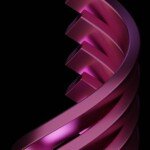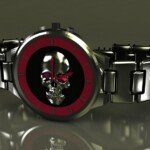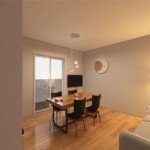Unlocking industrial innovation: the transformational power of large-scale 500×500 metal 3D printing
The creation of landscape is revolutionizing. With the industry’s design complexity, boundaries between material performance and production efficiency, large-scale metal 3D printing, especially machines with expansion of 500x500mm³, has become a key enabler. This technology goes beyond prototypes to the field where production was previously impossible or expensive to use parts of the substantive end-use. For engineers, designers and procurement experts seeking competitive advantages, understanding this technology is crucial.
Beyond the bench: The importance of 500×500 dimensions
The 500x500mm³ (usually extending significantly in height) build envelope represents a significant leap. It bridges the gap between smaller industrial printers for complex components and large-scale systems reserved for large-scale structures of aerospace or automotive. This size is strategically relevant:
- Merge components: Replacing complex multi-part components with a holistic structure greatly reduces assembly time, eliminates fasteners, minimizes fault points and enhances overall integrity. Think of turbine casing, large hydraulic manifolds, or robotic final effect.
- Large tools and molds: Manufacture of conformal cooling molds for injection molding or direct casting with metal, optimize cooling channels with faster cycle times, superior part quality and extended tool life are critical for high volume production efficiency.
- Industrial machinery components: Directly integrate a large number of brackets, manifolds, heat exchangers, pump housings and structural frames into large machinery and equipment.
- Aerospace and Defense: Components such as fairly lightweight satellite structures, drone frames, engine brackets and structural fuselage elements benefit from weight savings and design freedom.
- Energy Sector: Complex impellers for large pumps and turbines, valve bodies for oil and gas, heat exchanger cores, and specialized components for nuclear or renewable energy systems.
Computer room: Technology that powers large metal deposition
Achieving precision and structural integrity in large format metal printing requires complex techniques, mainly from Powder bed fusion (PBF) Techniques such as selective laser melting (SLM) or direct metal laser sintering (DML):
- High power laser system: Large quantities require powerful lasers (usually multiple lasers are used simultaneously – 1kW+) to ensure sufficient energy density throughout the build area and maintain a consistent melting speed.
- Precision recoating: It is extraordinary to evenly distribute fine metal powder on such a large bed. Advanced retuning mechanisms with precise control and vibration attenuation are critical for layer consistency and defect prevention.
- Thermal management: In large buildings, heat accumulation is a major challenge. Complex heating systems ensure stable room temperature and carefully controlled airflow (usually argon or nitrogen) eliminate smoke and splash, thus preventing oxidation and porosity.
- Powerful scanning system: The instrument scans the laser beam with extremely high speed and accuracy over the entire 500x500mm area. Complex control software seamlessly coordinates multiple lasers.
- Material handling: Safe and efficient management of large amounts of metal powder requires automated systems for powder loading, screening and recycling.
- Process monitoring: Advanced sensors track melt pool characteristics, temperature distribution and potential anomalies in real time, enabling process control and data-driven quality assurance.
Trade-offs: Advantages and Challenges
advantage:
- Unrivaled design freedom: Create geometry (internal lattice, complex channels, topological optimization) that was previously impossible to make.
- Parts merge: Reduce part counting, logistics, assembly time and potential failure points.
- lose weight: Generate highly optimized lightweight structures that are critical to aerospace, automotive and robotics.
- Material efficiency: Additive manufacturing uses only the materials and support required for the part, minimizing waste compared to subtraction methods for complex parts.
- Customized and on-demand production: Economically produce custom parts, prototypes or small batches without the need for tool investment.
- Delivery time: The faster transition from CAD files to functional parts to functional parts for complex components has accelerated the market time.
Challenge and mitigation strategies:
- Residual pressure and distortion: Large thermal gradients increase stress risk. Mitigation measures include optimized support structure, thermal management strategies, well-designed scanning modes, and precise warm-up. Strategic post-processing stress relief is often essential.
- Surface surface and accuracy: The surface of the gauge may be rough. Expert post-processing (processing, polishing, bead blasting, EDM) is crucial for functional tolerances and cosmetic requirements. Greatlight seamlessly integrates these steps.
- Large-scale cost efficiency: The cost of powder and the long manufacturing time make large prints an investment. Value is achieved through mergers, performance improvements, reduced assembly and implementation of novel designs. Careful process optimization is the key.
- Powder Management: Handling and reusing a large number of require strict protocols to ensure material quality and operator safety.
- quality assurance: NDT (X-ray, CT scan, ultrasound) is crucial for identifying hidden internal defects in large key areas. Process qualifications and meticulous parameter control are the basis.
Greglime: Engineering excellence in large metal additive manufacturing industries
At Greatlight, we are not only operating machines; we design solutions. Our deep expertise in large-scale metal 3D printing, especially meeting the needs of 500x500mm, makes us a strategic partner for industrial innovation.
- Advanced PBF technology: We deploy state-of-the-art large format metal 3D printers for stability, accuracy and repeatability optimization. Our focus is on powder bed fusion methods, such as SLM/DML, selected with its excellent material properties and detailed resolution.
- Materials Science Expertise: From aluminum alloys ALSI10MG, TI64 titanium, stainless steel (316L, 17-4PH), tool steel, Inconel 718 and 625 to aluminum-containing alloys, to special cobalt-chromosomes and potentially customized materials, we have the knowledge of the best materials for applications.
- Integrated production and finish: Our capabilities go far beyond printing. We provide a real One-stop solutionincluding experts Design of Additive Manufacturing (DFAM) Consultation, meticulous Post-processing (Precision CNC machining, turning, EDM tangent, grinding, aggressive shooting, polishing, polishing, heat treatment – hips, tempering, annealing) and Completed in full (Explosion, anodization, color plating, painting). This vertical integration ensures quality control at each stage and accelerates delivery.
- Accuracy and repeatability: Building a big one does not mean sacrificing accuracy. Our process and strict quality systems ensure dimensional accuracy and consistent mechanical properties throughout the build volume.
- Quick customization: We excel in fast iterative and customized production, turning complex CAD designs into functional reality at fast and competitive prices.
Conclusion: Embrace the future of large-scale manufacturing
The 500x500mm³ metal 3D printer is more than just a bigger machine. It is a gateway to unprecedented possibilities in engineering and manufacturing. It enables designers to escape traditional constraints, resulting in stronger, lighter, more efficient parts and revolutionize the supply chain for complex or low-volume components. Despite the challenges associated with process control, stress management and post-processing, these challenges are effectively addressed through technological advancements and deep process expertise.
Working with renowned leaders in large-scale metal additive manufacturing is critical to navigation complexity and unlocking full value. At Greatlight, we combine cutting-edge technology with unparalleled production experience and comprehensive after-processing capabilities to deliver high-performance, precise metal parts that meet the most demanding industry standards. Ready to change your design and production? Today, explore the potential of large-scale metal 3D printing. Please contact us for your custom precision machining project.
FAQ: Large 500×500 Metal 3D Printing
Q1: Which specific metal 3D printing technology is best for parts of this size?
A: The powder bed fusion (PBF) method, mainly selective laser melting (SLM) or direct metal laser sintering (DML), is the main and most reliable technology for producing large, high-density and mechanically powerful metal parts in a 500x500mm³ build volume. These technologies provide the necessary precision, material property control and scalability.
Q2: What materials can be actually printed on this scale?
A: A wide range of industrial metal alloys is compatible, including Aluminum Alloys (AlSi10Mg, AlSi7Mg), Titanium Alloys (Ti6Al4V Gr5), Various Stainless Steels (316L, 15-5PH, 17-4PH, Maraging Steel), Nickel Alloys (Inconel 718, 625), Cobalt-Chrome Alloys, and Tool Steels (e.g., H13). Material suitability depends on the part’s functionality and required properties; specific availability should be confirmed with your service provider like Greatlime.
Question 3: How long does it take to print a full 500×500 build?
A: The construction time based on part volume, height, density, complexity, layer thickness and laser number varies greatly. Large buildings usually take days or even weeks. Uninterrupted printing requires stable systems and reliable automation. Greglight can provide time estimates based on your specific part geometry during the quote process.
Question 4: Are the parts sizes sufficient for end-use applications?
A: Yes, absolutely. Metal 3D printed parts achieve mechanical properties that usually exceed the casting, either close-range matching in certain optimized cases, or close-range matching in certain optimized cases, or close-up in some optimizations, or close-up in some optimizations, or close-up in twisting materials. Specific mechanical properties are material and process dependent.
Q5: What level of accuracy and finish can I expect?
A: ASPRINT accuracy usually ranges from about ±0.1% to 0.3% of the size (plus a fixed offset), usually resolved to 0.1 to 0.2 mm depending on the system and calibration. The surface roughness (RA) in the course state can be rough (10-25 micron RA). Critical accuracy and smooth finishes with integrated post-processing (Precision CNC machining, grinding, polishing, EDM) is provided by a comprehensive service provider like Greatlime. The final tolerance is project-specific.
Q6: Why choose a service like Greatlight instead of buying our own large printer?
A: Large metal PBF systems represent multi-million dollar investments. Working with service providers provides great advantages:
- Lower entry: Avoid massive capital expenditures and operating costs (facilities, electricity, gases, powders, maintenance).
- Gain expertise: Utilizes knowledge of deep metallurgy, design (DFAM), process optimization and post-processing.
- State-of-the-art capabilities: Take advantage of the latest technology without the burden of upgrading.
- Scalability and flexibility: Scale production up/down without investment; access to multiple materials and finishes without internal settings.
- Reduce risks: Mitigate risks associated with process qualification, quality assurance and equipment downtime.
Question 7: What are the main benefits of part merging with large printing?
A: Combining multiple components into one single 3D printed part provides:
- lose weight: The optimized internal structure reduces unnecessary weight.
- Improve strength/reliability: Eliminate welds/joints/seals to reduce fault points.
- Simplified assembly: Significantly reduce labor time, costs and potential assembly errors.
- Enhanced features: Enable integration features such as complex internal cooling channels or cable routing.
- Streamlined supply chain: There are fewer parts managed, sourced and assembled.
Ready to take advantage of the capabilities of large metal additives for your next project? Greatlight offers technology, expertise, and end-to-end processing to quickly and cost-effectively turn your ambitious design into reality. Get in touch with your custom solution!


















